The seventh in a series of occasional posts about tripping along U.S. Highway 395.
After our visit to Manzanar, Cora and I continued our trip south along Highway 395 to the last stop on our journey, Lone Pine, population 3700 and a visit to the Alabama Hills and the surrounding area.
Festus Rogers squinted at the boulder strewn ground in front of him and saw right away, that it was good ground for a man bent on ambush, and thus bad ground for him. The trail he’d been following was arrow straight as it passed through the sagebrush carpeted flats. Straight, that is, until it hit this hard land of rock-bound gullies. Here the trail twisted past boulders and around odd rock formations. The path narrowed, grew faint in spots and nearly disappeared in others, as it rose and fell with the contours of that hilly terrain. It was as if the almighty had thrown a tantrum sometime during creation and just decided to toss boulders around willy-nilly. After making his way through a few switchbacks, Rogers pulled up the reins on his horse Jaspar, “Woah.” Festus took off his wide brimmed hat and wiped the sweat from his forehead with a dusty sleeve, leaving a streak of dirt on his brow. “It’s hotter n’ the devil’s griddle,” he said, before taking a pull from his canteen. Festus scanned the bluffs above. He’d been bounty hunting enough to know that his quarry, a named Kincaid, would probably make his stand in this Satan’s garden in the middle of the Chihuahuan Desert. Kincaid was wanted for a string of robberies and killings from Tucson to Albuquerque to Las Cruces. Now he was on the run, headed for Ciudad Juarez, where Kincaid would be a free man, spending his ill gotten gains on tequila and senoritas “Helluva a place for an ambush, ain’t it, Jaspar,” he said, patting the horse’s neck. He pulled the Winchester 30-30, from its scabbard, double checked that it was loaded and then laid it across the pommel of his saddle. Festus then pulled his Colt revolver, and checked the six chambers to make sure the big pistol was loaded. He ran a finger along his gun belt feeling the lead slugs. He knew he was well armed, he just needed that tactile reassurance. Satisfied, Festus gave Jaspar a little nudge with his boot and rode on. Trusting Jaspar to make his way along the trail, Festus scanned the crags and natural hideouts and lairs. He knew Kincaid was lying in wait. It was only a matter of time before the outlaw would make himself known. Festus didn’t have to wait long. As Jaspar rounded a long curve in the trail, Festus heard the crack of a rifle shot and ducked instinctively. The ping and whine of the ricochet to his left told Festus that Kincaid was in the boulders off to the right. He jumped from Jaspar and took cover behind a boulder.
“That you, Kincaid?”
“It is Rogers. I been a feelin’ you trackin’ me. I’m gonna end it between us here and now.”
“Give yourself up Kincaid. Just make it easy on the both of us. I don’t wanna have to kill ye, but the reward money is just as green whether I bring you in dead or alive.”
Lone Pine, Alabama Hills, Hollywood and the horse operas
Ah, the old ambush scene. If, like me, you’re a fan of Westerns, then you’ve probably watched a similar scene played out in any number of movies and TV shows. The old box canyon ambush is a staple of Westerns, and there’s a better than even chance that the one you saw was shot in the Alabama Hills just west of the town of Lone Pine.
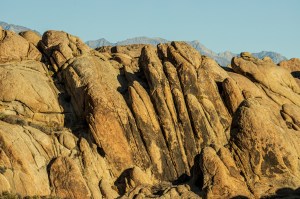
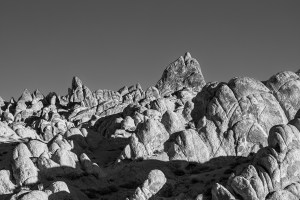

There’s a real story, repeated as often as the ambush scene in Western movies. In his constant search for land and riches, the White man moved west and found the inconvenient presence of people who looked different, acted differently, worshipped differently, and, most inconveniently, wanted to remain on the lands that they’d occupied for centuries. Vilified as heathen savages, they were systematically and violently forced from their lands.
In the case of Lone Pine and the Alabama Hills, it was the Paiute that was smothered by the westward wave. The first ripple came in 1861 with the erecting of a lone cabin in the Owens Valley. Growth was swift. After a post office was established in 1872, the fledgling town became a supplier for the nearby mines and then a rail town. In 1919 the history of the area was changed when the silent film, The Round Up, starring Roscoe ‘Fatty’ Arbuckle was shot in the Alabama Hills.
It was the start of a new migration, this one from the south, from Hollywood. The area was the perfect location for shooting scenes that wanted a rugged, rocky, desolate terrain. Western movies were all the rage for decades and the Alabama Hills/Lone Pine area was convenient for Hollywood filmmakers looking for the suitable location and backdrop.
Ironically, the Native American was returned to the area to repeat the history of decades past. The American Indian was still a villain, and still stubbornly wanting to hold onto the land that would once again be taken from him. Only this time he was a character, a convenient foil for the American settlers and cavalry. This time it was on film and most of the celluloid stories were phony, whitewashed versions of a history that Americans not only thirsted for but actually believed.
From the 1920’s on, the film industry fed the area’s economy. Movies that were filmed in the area include, Joe Kidd, True Grit, Nevada Smith, Bad Day at Black Rock, King of the Pecos, The Ox Bow Incident, Westward Ho, and Django Unchained. During the heyday of TV Westerns it was Bonanza, Wagon Train, Have Gun, Will Travel, and Rawhide.
It wasn’t just Westerns that were shot in the area. Other movies include Iron Man, G.I. Jane, Tremors, Godzilla, and Gladiator (The scene in which Maximus is riding home to his wife and son. In the background is Mount Whitney).
In Lone Pine The Museum of Western Film History chronicles the celluloid history of the region. Below is one of the many movie posters on display in the museum. Note the cultural appropriation.

The desk clerk at the Dow Villa Motel was busy when we arrived to check-in, so I wandered around the spacious lobby. The lobby/office building, the hotel portion of the property, was built in the early 1920’s. The motel portion, where Cora and I were staying, was built in 1957.
The lobby was appointed with traditional American furnishings on a blue carpet. A pair of light blue upholstered chairs sat in front of a big, stone fireplace. The cream colored walls were decorated with Western movie memorabilia, and most of the mementoes were dedicated to John Wayne. The place was papered with paintings, movie stills, posters, autographed photos and memorabilia devoted to Wayne; the holy chapel of the Duke. All that lacked was a bank of red, white and blue votive candles; leave a quarter and light a flame for the soul of the Duke.
For me it was at once, both impressive and unexciting. As extraordinary as I found the collection to be, it was all in honor of a man who I could never be partial to. Before all the dirt was officially revealed I had him pegged as a racist bastard – God rest his xenophobic soul. I never considered Wayne to be much of an actor either. Beyond all that, I guess he was the salt of the Earth.
Still it’s understandable that the Dow honors Wayne. In the old days, when the Western genre was king, it was Wayne, a frequent guest of the hotel, who helped solidify the Dow’s reputation. Wayne first stayed at the Dow in 1935. His last stay was in 1978, when Wayne was in the area to film his last appearance on film, a television commercial for Great Western Bank. Wayne passed away ten months later.
A closer look around the lobby revealed that the place isn’t all Wayne’s world. There were photos of other Western movie stars, including William Boyd, Roy Rogers, Gene Autry, Stewart Granger, Errol Flynn, Robert Mitchum, Steve McQueen, Clint Eastwood, and even Pat Buttram (Green Acres fans will remember Buttram as the greasy traveling salesman who supplied Oliver Douglas with whatever Oliver needed, whenever he needed it – and always at an exorbitant price).
After checking in, the clerk pointed the way to our room. The motel portion was built in the U shape of the classic motor inn. I love these places. In what fancy, high rise hotel can you back your car into a parking spot right in front of the front door of your room? None! Right? Pop open the trunk, haul your luggage, the cooler, the portable bar and the bags of junk food/provisions into the room, close the trunk, pour a drink, shut the door and kick your feet up. Home, sweet fucking home. There’s no lugging your stuff past all the people in the lobby checking out the newcomers, and no dealing with the bell clerk quandary of wondering what a fair tip will be, only to look in your wallet and a discover that the smallest bill you have is a fifty. “Dammit wife, why didn’t you remind me to change this fifty back at the t-shirt shop.”
After unloading the car, I closed the lid to the trunk and glanced briefly to the west. “Holy shit, Cora. Come look at this.”
I didn’t realize that Mount Whitney would be so close, yet there it was, glorious, with its 14,494 foot peak lording over the runts surrounding it.
After settling in, Cora wanted to relax and turn on the TV. A chance for me to go hunt up the dead bodies – in a manner of speaking. There’s an old cemetery in town and I decided to take my camera and check out the old graveyard.
The Lone Pine Pioneer Cemetery was established in 1865. The first residents were a Mrs. McGuire and her son, who celebrated New Year’s Day of that year getting killed in the last battle of the Owens Valley Indian War. Along with the McGuire’s, the cemetery is home to some of Lone Pine’s founders.
As appealing and welcoming as the town proper can be, one doesn’t have to venture far to the eastern fringes to find a land that’s barren and inhospitable. Face the hills to the east and one wouldn’t even know there’s a small, yet busy town less than a quarter mile behind. That’s just what I found when I arrived at the old graveyard.

Standing outside the old wrought iron fence surrounding the cemetery one can make out just a few headstones. The rest? Crumbled or choked from view by the sage brush

The monument on the left marks a grave named White, the eternal home of Joseph White, apparently the Americanized version of a man born Giuseppe Blanco, in Italy, Giuseppe was born in 1861 and died 19 Dec 1902.
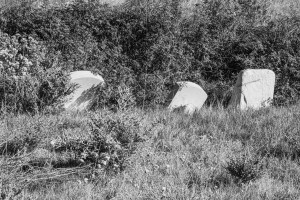
Three eternal homes.
Seeking Mobius
I was up early the next morning, with a mission to find a rock formation called the Mobius Arch, in the Alabama Hills. The travel guides say that the Alabama Hills trails can be clear one moment and peter out to nothing a few steps later. It was a good hour before sunrise when I left, and faint light when I parked in the small lot at the trailhead.
Two young women were unpacking their car and chatting when I arrived. I gathered my gear, took in a lay of the land, shut the trunk lid and noticed that the two women were still noodling around and chit-chatting as I set out.
I was hunting for a shot of Mount Whitney lit by the rising sun and framed by the Mobius Arch. Just as the travel guides warned, the trail was clear and then suddenly gone, forcing me to double back to the well marked section to get a second look and find where the trail picked up again.
The trails can be eerie, especially when there isn’t a whisper of a breeze. Sound carries. I was a good half mile or more from the trailhead and I could still hear the two women I’d seen in the parking lot, though I knew that they were nowhere nearby. Every now and then I could hear footsteps on the trail – somewhere. In the still air the crunch of footfalls seemed just feet away yet I couldn’t make out how far away they were or from which direction they came. Was it the two women or someone else? Ghost of some old western actor? Maybe it was the outlaw, Kincaid (my dad once noted, properly, that a Western character with the name Kincaid, is invariably a desperado). I paused when I was startled by a whooshing sound. I looked up to see a hawk disappear beyond the boulders to my left. The whooshing sound came from the hawk’s wings beating the still air.
I glanced to the west and saw that the sun was starting to light up Mount Whitney. No sign of the Mobius Arch so I had to blow that off and find a place to set up my tripod to photograph the mountain’s brightening face.
Below, the rising sun lights up Mount Whitney

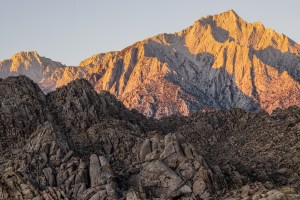
I’d about given up on Mobius when I turned around and there it was. Too late for the classic sunrise shot but it’s still a good shot nonetheless.

Miracle tale at the Totem
Al fresco dining at The Totem Café is off to the side of the building along Whitney Portal Road. A half dozen or so tables on an Astroturf patio. It was a late lunch and we were the last stragglers when the waitress came for the remnants of our loaded nachos. I’d just signed the bill and I asked her if they get a lot of year round business in Lone Pine.
“Yes. We get campers in the spring and summer and people come for the film festival around this time of year. In the winter we get some skiers. We get a lot of tourists from Europe. They do Las Vegas and then visit Death Valley and stop here on the way to Yosemite and San Francisco.”
“Do you like it here?” I asked.
“I love it here,” she said. “I’m a single mom with two kids and this is a much better place to raise children. I like the local school. I take them to school, pick them up, take them to soccer. My son is going to have his first communion. It’s so much better in a small town.”
Cora asked how old her children were.
“Eleven and six.”
That opened the door to the mom to mom conversation and the two talked at length while I fiddled with my camera.
After a few minutes, the young woman related a story of life and near death. She was driving on 395 one night with her children in the back seat. At night, outside of town, 395 is ink black and lonely. Night time is when the animals come out to forage and that was likely the case when a coyote appeared in front of her car. She swerved to avoid the animal and in doing so, she flipped and rolled the car. A big rig stopped to assist.
“Oh my Lord and my God,” said Cora.
“Look at me,” said the woman, holding her arms out with her palms toward us. “I’m walking, I’m healthy. My kids are fine. I told them. ‘It’s just a car. We have our health.’”
As the young woman continued her story, Cora rummaged through her purse, pulled out a twenty dollar bill and tried to put it in the woman’s hand. She pulled back and protested that Cora didn’t have to do that.
“Take it,” I said. “She won’t leave here until you do.”
The young waitress relented and took the bill, thanking Cora while tearing up, which got Cora started and in short order the water works were operating at full tilt.
Keeler
With a population of 71, I suppose one could make the case that the town has experienced a boom. Ten years prior the population was 66.
Present day Keeler, originally known as Cerro Gordo Landing and later as Hawley, began in the 1870’s as a pier and freight terminal on the eastern shore of Owens Lake. Loaded with silver and lead ore from the nearby Cerro Gordo Mines, the steamship Bessie Brady freighted its cargo across the lake to the town of Cartago. The crossing cut days off the time that it would have taken to carry the ore around the lake by wagon.
In 1880, Julius Keeler, an agent for the Cerro Gordo Mining Company, platted out the town that would bear his name. Julius bult an ore mill, and the plan was for the Carson and Colorado Railroad to extend its line to Keeler which would become the railroad’s terminus. By the time the extension was completed in 1883, mining and production in the area had nearly ceased. When banker Darius Ogden Mills toured the line and saw the destitute condition of Keeler, he remarked, “Gentlemen, we either built it 300 miles too long or 300 miles too soon.” Seven years later, the line was sold to the Southern Pacific.
Like many mining towns, Keeler rode the roller coaster of mining booms and busts. In 1906, a smelter was built to process silver ore, followed by a zinc smelter two years later. Keeler went on and off of life support. Beginning in 1913, water from Owens Lake was diverted to slake the thirst of burgeoning Los Angeles. Thirteen years later, the lake was dry and Keeler managed to stay afloat by processing soda taken from the lake bed. The soda processing only served to stave off the inevitable. Mining continued to go in and out of its death rattle until the 1950’s when all operations ceased. The last train out of Keeler departed the dying town in April of 1960 and the following year, the rails were pulled up.
Southbound Highway 136 eventually takes one to Death Valley. On the day we took 136, the route to Death Valley was closed but our plan was to stop and visit Keeler, three miles north of the closure.
At two o’clock in the afternoon Keeler was sizzling, lonely and dismal. A few tumble down historic buildings, remnants of Keeler’s better days, were surrounded by a collection of homes in states from rickety to broken down. We saw one person out and about, a blonde woman in a t-shirt, short pants and sandals. The other 70 denizens were nowhere to be seen and I had to wonder why anyone would be there in the first place. A quest for solitude? A tie to tradition? Nowhere to go? A fugitive from justice? An artist or a writer who can only create in reclusiveness? I’ve often longed for a secluded life, a place where I could read, write, create and not deal with the pettiness and meanness that has come to define American life. But Keeler? It’s the searing edge of Earth.
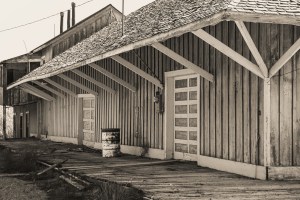
Rail depot Keeler
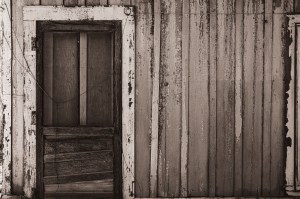
Rail depot Keeler

We would be heading home the next day, so before dusk, I returned to the Alabama Hills to photograph the brilliance of the sun setting behind Mount Whitney and the eastern slope of the Sierra Nevada. The magic of sunset and sunrise is that the tableau is ever changing. Every few seconds, the panorama has changed, but be quick, or before you know it, the opportunity has gone forever. No two sunsets are ever the same.
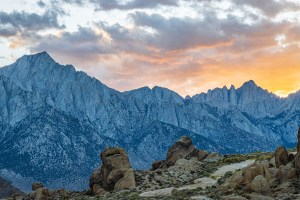
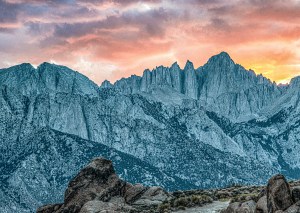

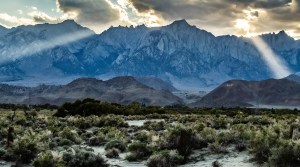
We were home the next day. Three days later I was on the road again to explore Highway 395 from the Oregon border to Reno, and then beyond.

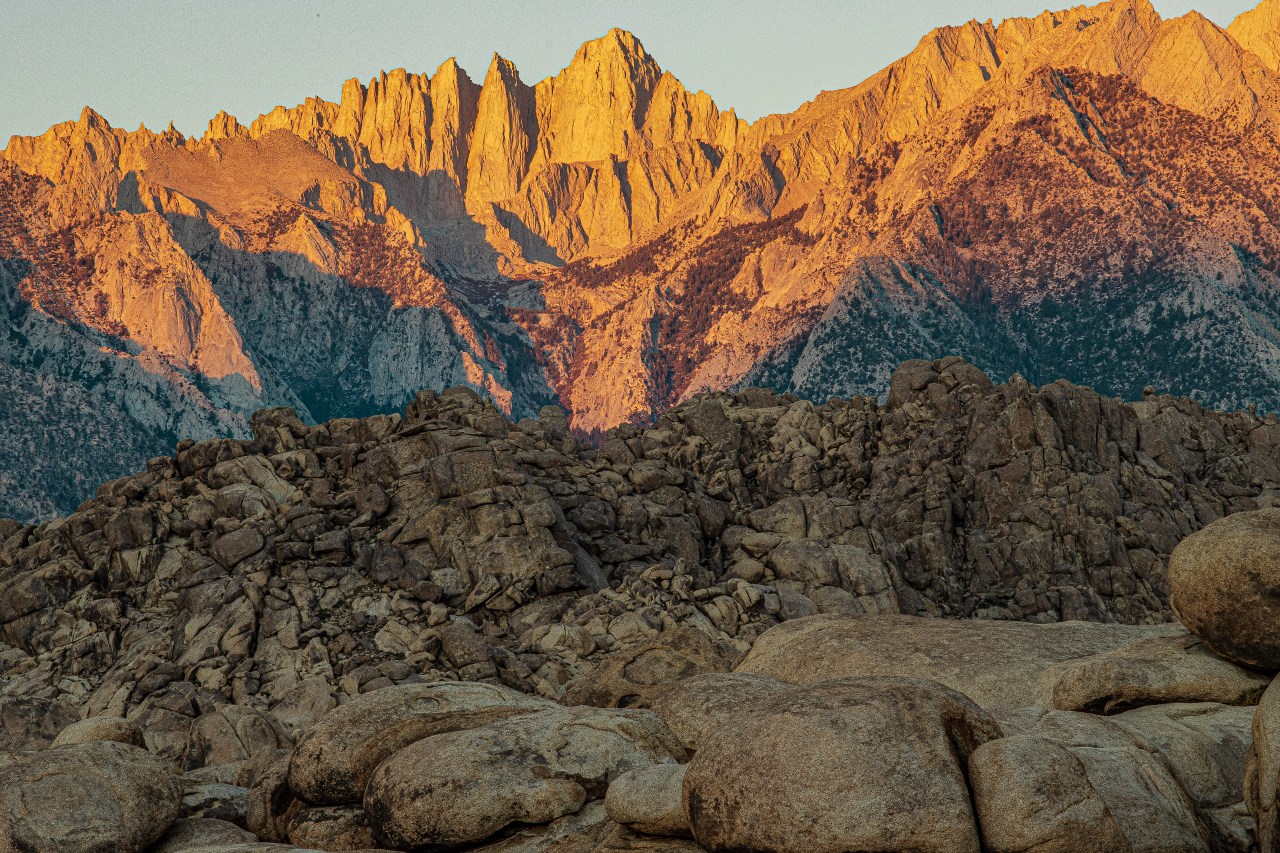

Great story Paul, and lovely pictures. The landscape is so beautiful over there! The bit about your stop in Lone Pine made me smile. The waitress was right: Europeans do exactly that: Las Vegas, Death valley and then a stop over in Lone Pine before heading to California. My diary says it felt a bit like a cowboy town, and when I ate my stewed beef and beans a couple of Stetson covered guy’s at the bar enhanced that impression, like they were extra’s in a spaghetti western from the seventees. 🙂
LikeLike
Hello Peter,
I apologize for this very late response. That Las Vegas to San Francisco route is a great itinerary. You get a little taste of everything.
Thank you so much for reading and for commenting.
Paul
LikeLike
Fabulous descriptive narrative, fabulous pictures!!
LikeLike
Hello Jane.
I apologize for the late response. Thank you so much for the kind words.
Paul
LikeLike
Ooh, this post has everything – stunning landscapes of the Alabama Hills, Mount Whitney at sunrise and sunset (and the fabulous shot of the Mobius Arch), interesting and thoughtfully told history, human interest, great photography (I love the shots of dereliction in Keeler as well as the landscapes) and even a bit of nostalgia for me. We stopped off in the Lone Pine area on our first ever US road trip, around California, and were thrilled to be seeing for ourselves the landscapes of the westerns we’d watched as children (not then, of course, understanding the historical injustices being played out).
LikeLike
Hello Sarah,
Apologies for the late response. Thank you so much. I’m glad you enjoyed it. Did you make it to the Western Movie Museum in town? Very interesting.
Paul
LikeLike
No we didn’t – not sure if it was even there in 1991?!
LikeLike
Well, I don’t need to huff and puff about Wayne here, I see, ’cause we’re on the same page, more or less, lol. It’s funny that we both spoke about him in our posts this week. The historicity of Lone Pine is not to be denied, though.
I get to brag a little bit, too, because you mentioned Mr. Whitney, and my husband and I summited it in 2008. We trained a lot for it, we brought oxygen with us (which we ended up not needing; yay!) and it’s lucky we did it, because due to later health issues, we wouldn’t have been able to accomplish that today. Carpe diem definitely was at work there, but admittedly my husband was the driving force behind it all, lol.
LikeLike
Hello Stacey,
I apologize for the late response.
You pretty much laid it out regarding John Wayne.
Very, very cool that you summited Mt. Whitney. We didn’t go quite so far. Made to Whitney Portal It was a nice easy drive. 🙄
Paul
LikeLike
Thoroughly enjoyable reading, I felt like I was right there with you. Fabulous photography too. We’ve been following a guy on YouTube who is overhauling the Cerro Gordo mine, between your article and the YouTube adventure, we may have to jump in the RV and make our way over there.
LikeLike
Hello Paul,
First of all, I apologize for the late response.
Thank you so much for the kind words. I believe that you’re in Arizona. It might be an interesting drive through Las Vegas and up through some of the ghost towns just north of there and then swing over through Death Valley and up 395.
Paul
LikeLike
Great pix and interesting info, as always. I didn’t realize that one of my favorite westerns, BAD DAY AT BLACK ROCK, was filmed at Lone Pine. Good to know..
LikeLike
Hello Mr. M.
There’s a dirt road the goes through the Alabama Hills that passes a lot of the locations where movies were filmed. It’s named Movie Road. I wonder how they came up with that name?
Paul
LikeLike
Very descriptive post, Paul, I have made notes for our spring 2024 road trip. I will definitely attempt for a sunrise photo at Mobius Arch and watch a few of the classic westerns you mentioned before we leave home. Stewart
LikeLike
Thanks Stewart.
Lone Pine is a very interesting place. When you’re there be sure to check out the Museum of Western Film History. Takes about 90 minutes.
I think my favorite show that had scenes filmed in the Alabama Hills was Have Gun Will Travel, with Richard Boone.
LikeLike